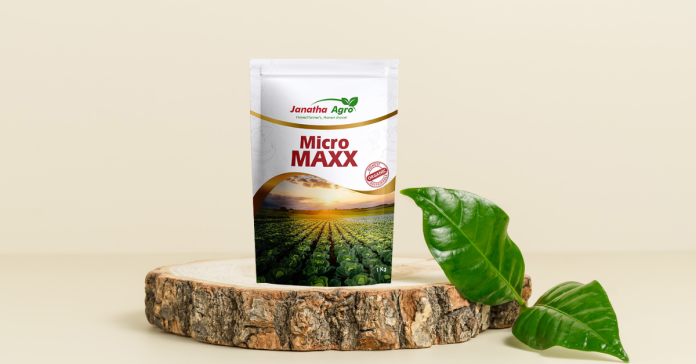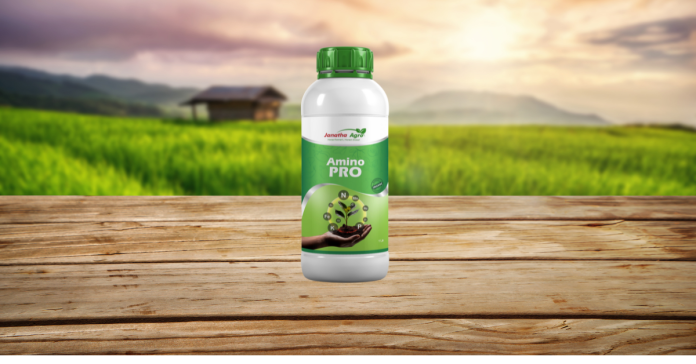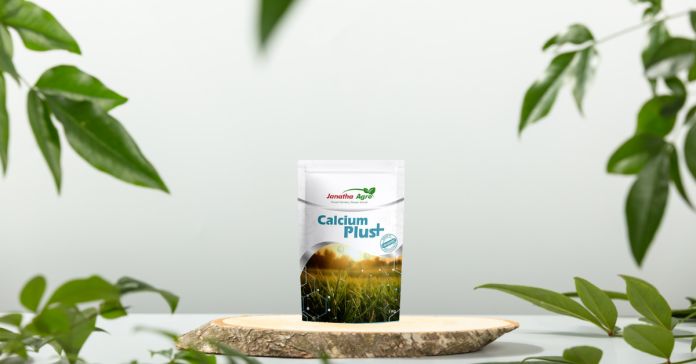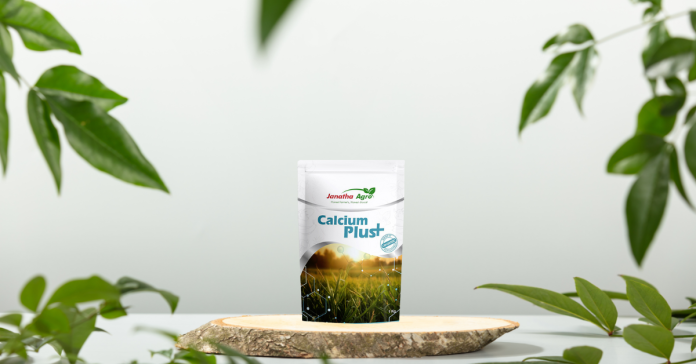Micro Maxx is a specialized amino acid chelate blend providing essential micronutrients like Zinc, Iron, Manganese, and Boron. This unique formulation ensures that these vital nutrients are easily available to plants, promoting balanced growth, improved productivity, and enhanced crop quality. By preventing premature flower and fruit drop, it ensures high-quality produce. Suitable for various crops, Micromax is an excellent choice for sustainable agriculture, addressing micronutrient deficiencies effectively. This balanced micronutrient formula ensures optimal plant growth, making it an essential addition to any plant nutrition regimen.
Maize crop
Maize (Zea mays L.), the world’s most popular crop, is a cereal grain that was originally domesticated in Central America and is now cultivated extensively across the globe. Known for its remarkable adaptability, maize can thrive in a wide range of environments, making it one of the most versatile crops. Often referred to as the “queen of cereals” due to its high genetic yield potential, maize requires a consistent and adequate nutritional supply throughout its growth cycle to achieve optimal yields.
Major stages of maize crop growth
- Vegetative stage
- Flowering stage
- Maturity & Cob development stage
Crop management with Janatha Micromaxx at various stages of Maize
-
Vegetative stages
The vegetative stage of maize is a critical period focused on the growth of leaves, stems, and roots. It begins with the emergence of the seedling and progresses through plant growth, where the plant rapidly develops its foliage and root system. This phase culminates in the formation of the tassel, marking the transition to the reproductive stage. Proper management during this time, including adequate water, nutrients, and pest control, is essential to ensure a healthy crop and maximize yield potential.
Product usage
- Micro Maxx is a specialized amino acid chelate blend providing essential micronutrients like Zinc, Iron, Manganese, and Boron, crucial for healthy plant growth during the vegetative stage.
- This easily absorbed formula ensures efficient nutrient uptake, promoting lush green leaves, and robust shoot and root development.
- Recommended dosage for foliar spray is 1 gram per liter or 200 grams per acre and for drip application, use 500 grams per acre. Frequent applications throughout the cropping cycle are advised for optimal results.
2. Flowering stage
The flowering stage in maize, also known as the reproductive stage, is marked by the development of tassels (male flowers) at the top of the plant and silks (female flowers) emerging from the ears. This stage is crucial for pollination, where pollen from the tassels fertilizes the silks, leading to kernel formation. Proper crop management during this period, including adequate water and nutrient supply, is essential to ensure successful pollination and maximize yield potential.
Product usage
- Micromaxx helps prevent the premature dropping of flowers, ensuring that your plants retain their blossoms until they are fully developed. By maintaining the health and stability of your plants.
- It supports the production of high-quality produce. This optimal approach to plant care not only enhances yield but also improves the overall quality of your harvest.
- Application of Micromaxx during this stage can reduce the biotic and abiotic stress.
- The recommended dosage for foliar spray is 1 gram per liter or 200 grams per acre, while for drip application, it should be 500 grams per acre.
3. Maturity & Cob development stage
Maturity and cob development stage in maize involves several key phases. Initially, the plant undergoes rapid stem elongation and nodal root formation, determining the potential number of grains per cob row. As the plant enters the reproductive phase, silk formation occurs, followed by the blister stage where kernels are small and watery. Physiological maturity is reached when kernels attain maximum dry weight and a black layer forms at the kernel’s attachment point, approximately 45-50 days after silking. Finally, in dent corn varieties, kernels develop a dent and a milk line appears, indicating the progression towards full maturity
Product usage
- Application of Micromaxx during this stage can increase the cob development and improves their overall quality, including taste, texture, and nutritional value.
- By applying the Micromaxx, you can achieve superior quality produce that meets high standards.
- The recommended dosage for foliar spray is 1 gram per liter or 200 grams per acre, while for drip application, it should be 500 grams per acre.
Paddy Crop
Paddy, or rice (Oryza sativa), is one of the most important staple crops globally, providing a primary food source for over half of the world’s population. Cultivated extensively in tropical and subtropical regions, paddy thrives in flooded fields, known as paddies, which help control weeds and pests while ensuring adequate water supply. The crop’s growth cycle includes several stages. Each stage requires nutrient supply to optimize growth and yield. Proper nutrient application is crucial for achieving high productivity, improving grain quality, and ensuring sustainable farming practices.
Major stages of maize crop growth
- Vegetative stage
- Flowering stage / Panicle initiation stage
- Maturity stage
Crop management with Janatha Micromaxx at various stages of Paddy
-
Vegetative stage
During the vegetative growth stage, the paddy plant concentrates its energy on producing leaves and tillers, which are crucial for the later development of flowers and panicles. This stage, lasting about 20-30 days, is marked by rapid growth and leaf production.
Product Usage
- Micromaxx provides crucial micronutrients like Zinc, Iron, Manganese, and Boron, vital for healthy plant growth during the vegetative stage of paddy crop.
- Efficient Nutrient Uptake: The easily absorbed formula ensures efficient nutrient uptake, promoting lush green leaves and robust shoot and root development.
- For foliar spray, use 1 gram per liter or 200 grams per acre.
2. Flowering stage / Panicle initiation stage
Flowering stage in paddy is crucial for the plant as it focuses on producing flowers and panicles, which are essential for grain formation. During this period, panicles emerge from the top of the plant, and pollination occurs, leading to grain development. Adequate nutrient and water management is vital during this stage to support these energy-intensive processes, ensuring successful pollination and maximizing yield potential. Proper care during the flowering stage is key to achieving a high-quality and abundant harvest.
Product Usage
- Micromaxx helps prevent the premature dropping of flowers during the flowering stage of paddy, ensuring panicles retain their blossoms until fully developed.
- By maintaining plant health and stability, Micromaxx supports the production of high-quality grains, enhancing both yield and overall harvest quality.
- Application of Micromaxx during this stage helps reduce biotic and abiotic stress, crucial for optimal plant performance.
- For foliar spray, use 1 gram per liter or 200 grams per acre.
3. Maturity stage
Maturity stage in paddy is the final phase of the crop’s growth cycle, where the grains reach their full development and readiness for harvest. Key characteristics of this stage include:
- Grain Filling: The grains accumulate starch and other nutrients, reaching their maximum dry weight.
- Color Change: The paddy plants start to change color from green to golden yellow, indicating ripeness.
- Moisture Reduction: The moisture content in the grains decreases, making them suitable for harvesting.
- Harvest Readiness: The grains become firm and hard, and the plants are ready to be harvested for optimal yield and quality.
Proper management during the maturity stage ensures high-quality grain production and maximizes yield potential.
Product usage
- Applying Micromaxx during the maturity stage of paddy can enhance panicle development and improve the overall quality of the grain filling.
- The recommended dosage for foliar spray is 1 gram per liter or 200 grams per acre.
Conclusion
Micromaxx is a versatile amino acid chelate blend that provides essential micronutrients like Zinc, Iron, Manganese, and Boron, supporting both maize and paddy crops through all growth stages. It promotes robust vegetative growth, prevents premature flower drop, and enhances cob and grain quality at maturity. By integrating Micro Maxx into your crop management practices, you can achieve higher yields, better quality produce, and a more resilient crop, ensuring sustainable and efficient farming.










